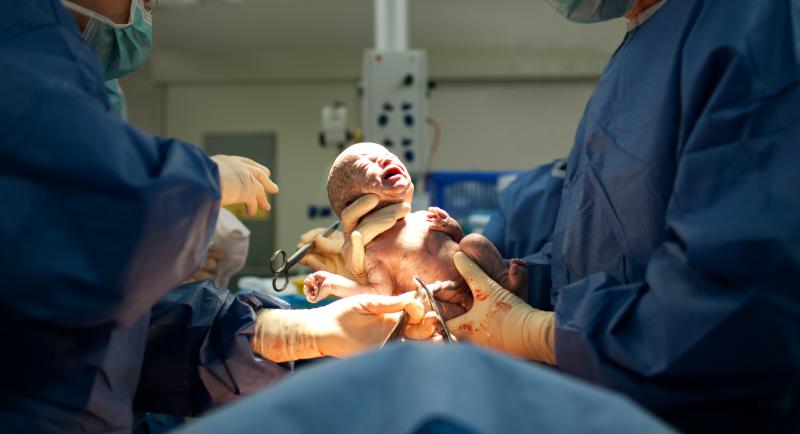Not crying at birth a sign for initiating resuscitation





All nonbreathing babies do not cry at birth, and breathing newborns who do not make their first cry may be a cause for alarm, as they have much higher odds of predischarge death, according to a study.
“Global protocols for neonatal resuscitation are based on ‘noncrying’ being a marker of ‘nonbreathing’,” the investigators said. “Our findings support noncrying as an indicator for initiating resuscitation and closer monitoring … [as well as] a possible denominator for measuring coverage of resuscitation.”
The analysis involved 19,977 infants from multiple hospitals in Nepal, among whom 2,225 (11.1 percent) did not cry at birth. The proportion of such infants increased with lower gestational age, with >50 percent of those born at 22–28 weeks of gestation not crying at birth.
In the group of noncrying infants, 1,188 (5.9 percent) were breathing and 1,037 (5.2 percent) were not. A total of 373 and 168 newborns did not breathe at 1 and 5 minutes, respectively, after delivery.
On multiple regression analysis, the likelihood of predischarge neonatal mortality was 46-fold higher among noncrying and nonbreathing newborns (adjusted odds ratio [aOR], 46.0, 95 percent confidence interval [CI], 25.8–81.9) and 12-fold higher among noncrying but breathing infants (aOR, 12.3, 95 percent CI, 5.8–26.1) as compared with those crying and breathing after birth. [Pediatrics 2020;doi:10.1542/peds.2019-2719]
Preterm birth, assisted vaginal delivery, and small for gestational age were all associated with predischarge neonatal mortality.
“[A]ll nonbreathing infants were noncrying after birth (100 percent sensitivity). The positive predictive value of noncrying infants was 50 percent for nonbreathing infants,” the investigators noted.
“In the cohort of noncrying but breathing infants at birth, almost all of them received simple measures of stimulation, and one in 10 infants received bag-and-mask ventilation (BMV). Those who are noncrying but breathing may have primary or secondary apnoea. These infants would require additional stimulation to assist in transition to spontaneous breathing, whereas some would require BMV,” they added.
The International Liaison Committee on Resuscitation (ILCOR) guideline for neonatal resuscitation is based on the following factors: gestation (term or preterm), breathing, crying, and tone. It stipulates that infants who are noncrying or nonbreathing receive additional stimulation, while those who still do not initiate spontaneous breathing and have heart rate <100 beats per minute require BMV. [Resuscitation 2010;81:e260-e287]
Despite the presence of limitations, the current study provides evidence of the association between noncrying and nonbreathing, the investigators said.
Crying aids in clearance of lung fluid and helps establish functional residual capacity, they explained. Coupled with perinatal depression, noncrying of the infant might heighten the risk of mortality, and additional mechanistic studies are needed to understand the physiology.